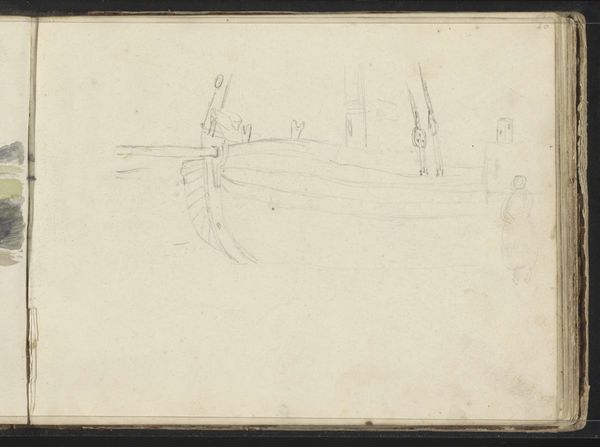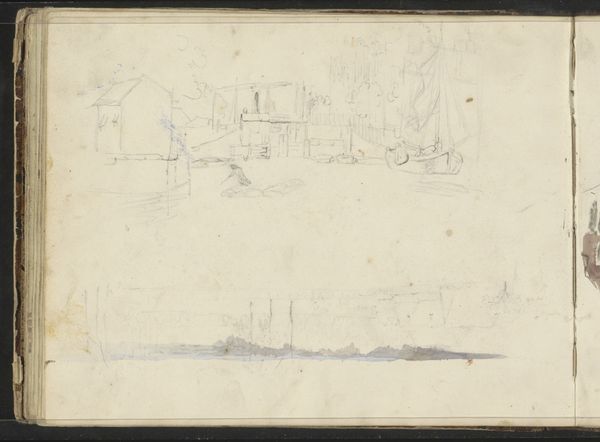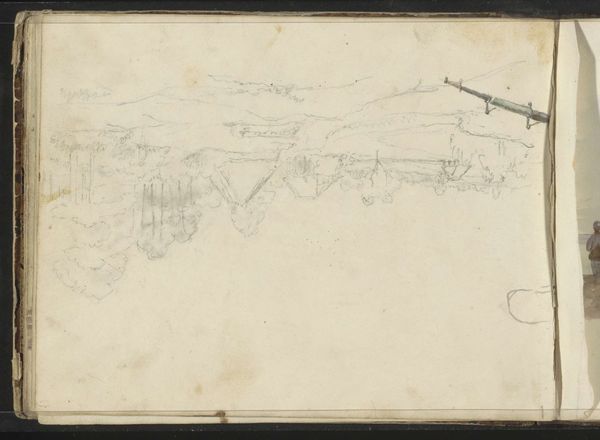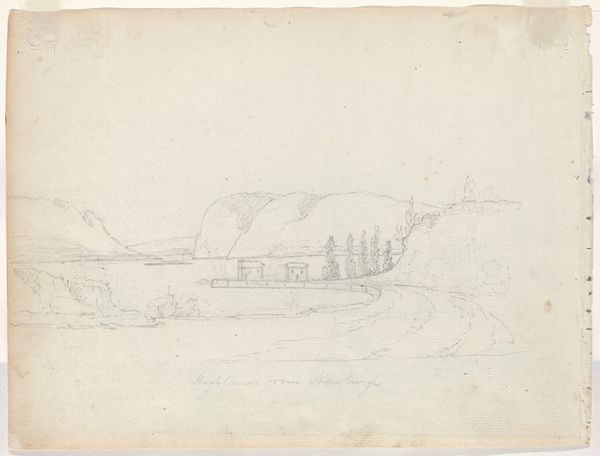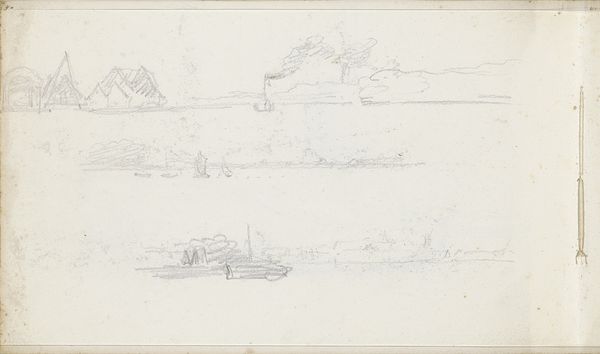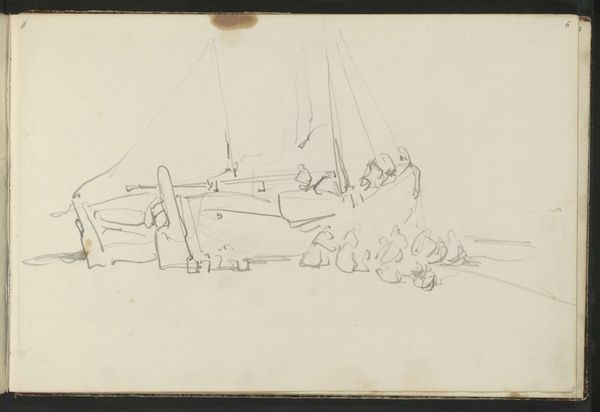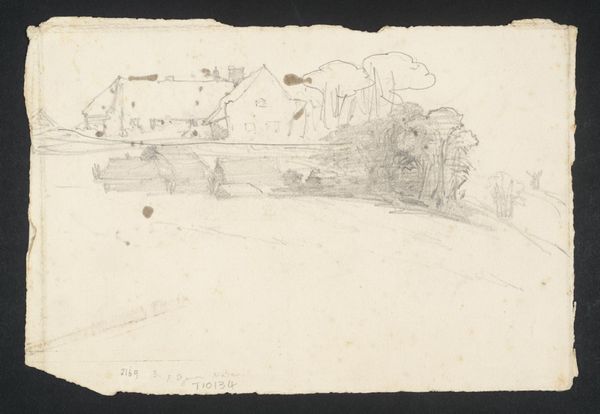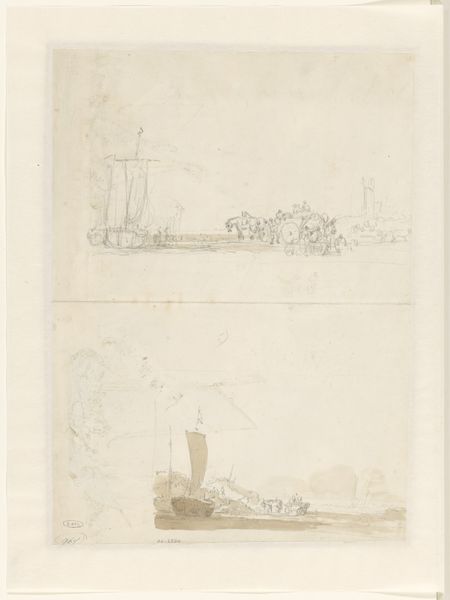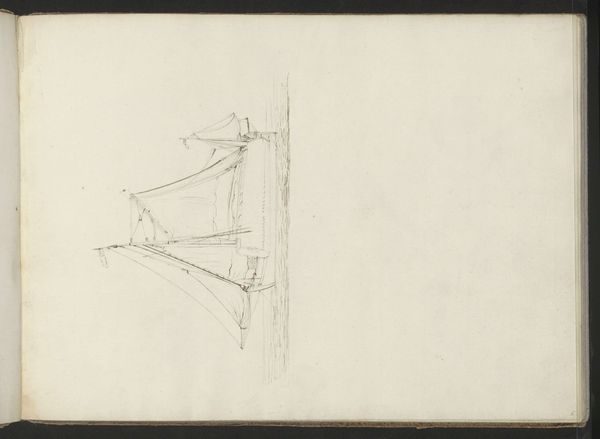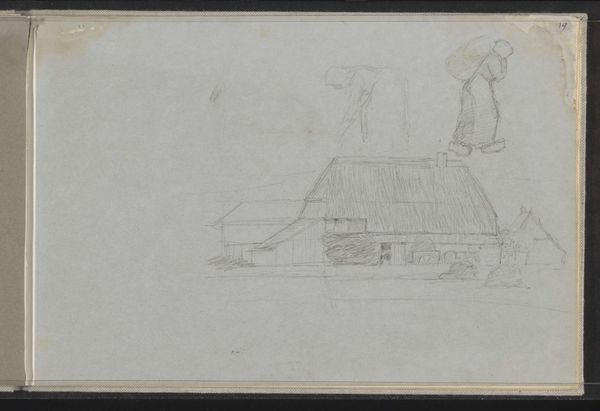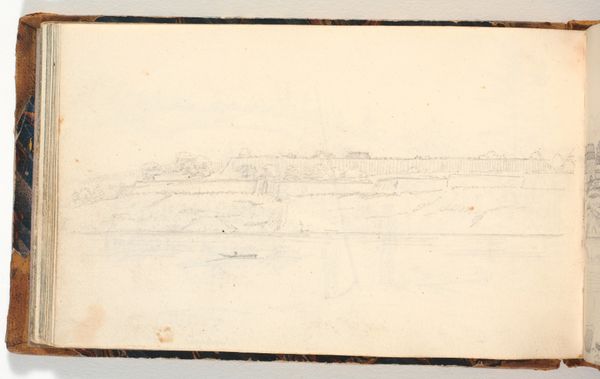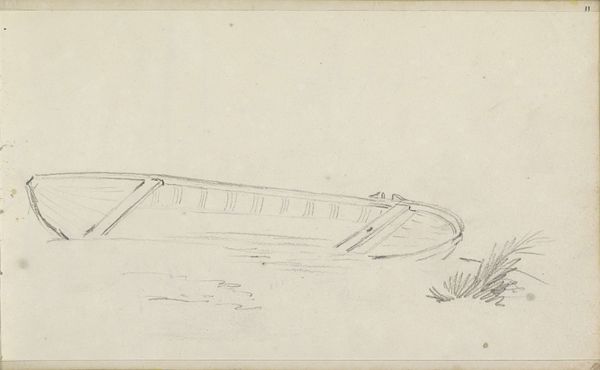
drawing, pencil
#
drawing
#
landscape
#
pencil
#
realism
Copyright: Rijks Museum: Open Domain
Curator: This pencil drawing is titled “Roeiboot, een kop en een hek bij een weiland,” which translates to "Rowboat, a bow and a gate near a meadow," and was created sometime between 1822 and 1893 by Willem (II) Troost. Editor: There's something quite charming about its stark simplicity, isn't there? The sketchiness gives it a feeling of spontaneity, a fleeting moment captured. Curator: Indeed. Troost was clearly interested in rendering the effects of light and form through minimal means. Notice the way the artist uses very few lines to suggest the mass and volume of the boat, for instance, and consider the materiality of drawing and sketches in 19th century landscape practice. How available would this pencil be, and who might use such material to contemplate the landscape? Editor: I find myself considering how this humble image fits within the larger story of Dutch landscape painting. One has to remember the power of art in this context: landscapes could inspire a sense of national pride but could also reflect contemporary agricultural practices of land use, enclosure, and property. Does this image tell us anything about these issues? Curator: It does indirectly, doesn’t it? The drawing is very unassuming, suggesting an artist more interested in observation than overt political statement. Also consider, too, how this image invites us to value what’s often dismissed as preliminary – the sketches, notes, and underdrawings that are as valuable in some ways as "finished" artworks. What happens when we reconsider our own artistic taxonomies and expectations of images to speak of clear national identity or class awareness? Editor: It highlights the democratizing effect of art itself. Regardless of his intentions, I do feel that such imagery becomes woven into the collective consciousness and, ultimately, shapes perception. The mundane details contribute to national or regional narratives, shaping common feelings about what a nation means. Curator: Absolutely. The image, produced on modest material, finds itself within museums, part of institutions designed to shape narratives for current publics and future generations. And what better setting than the Dutch landscape itself, reconfigured into pencils for making and viewing practices? Editor: I will definitely look differently at such "quick" sketches from now on! Curator: As will I! Thank you.
Comments
No comments
Be the first to comment and join the conversation on the ultimate creative platform.

